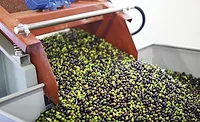Finishline: Maintenance is an Investment, Not an Expense
He was right. The 1960s were the era of disposability and planned obsolescence. Automobiles and appliances were replaced rather than repaired. Convenience food packaging was disposable, not yet recyclable. U.S. industrial plants were feeling competition -- ironically -- from defeated World War II enemies Japan and West Germany, who had replaced their bombed-out facilities with superior technologies.
I was reminded of Eric's column last June at Food Engineering's PlantTech '99 Conference. During the Sunday maintenance seminar preceding the conference, one speaker asked: "How many of you have a predictive maintenance program?" Of 24 food company engineers attending, only two raised their hands.
Some not responding may have preventive maintenance programs, but I suspect most are still doing "breakdown maintenance" -- i.e., "don't fix it 'til it breaks." I also suspect top management considers maintenance an expense rather than an investment. As another speaker pointed out, it can take anywhere from nine months to two years (depending on plant size) before a preventive maintenance program starts to show a payback. But after that, the benefits are compounded in terms of reduced costs and increased capacity. Networked PLCs incorporating diagnostics, which tell when a machine should be serviced, allow predictive maintenance, which can show dramatic paybacks within the first year.
Asset utilization and optimized production are buzzwords that accountants understand. So if you're still in a "breakdown-maintenance" mode, justify your request for a preventive or predictive maintenance budget in terms of an accelerating ROI and optimizing current assets to minimize capital expenditure.
Don't stay stuck back in the 1960s!
Looking for a reprint of this article?
From high-res PDFs to custom plaques, order your copy today!






